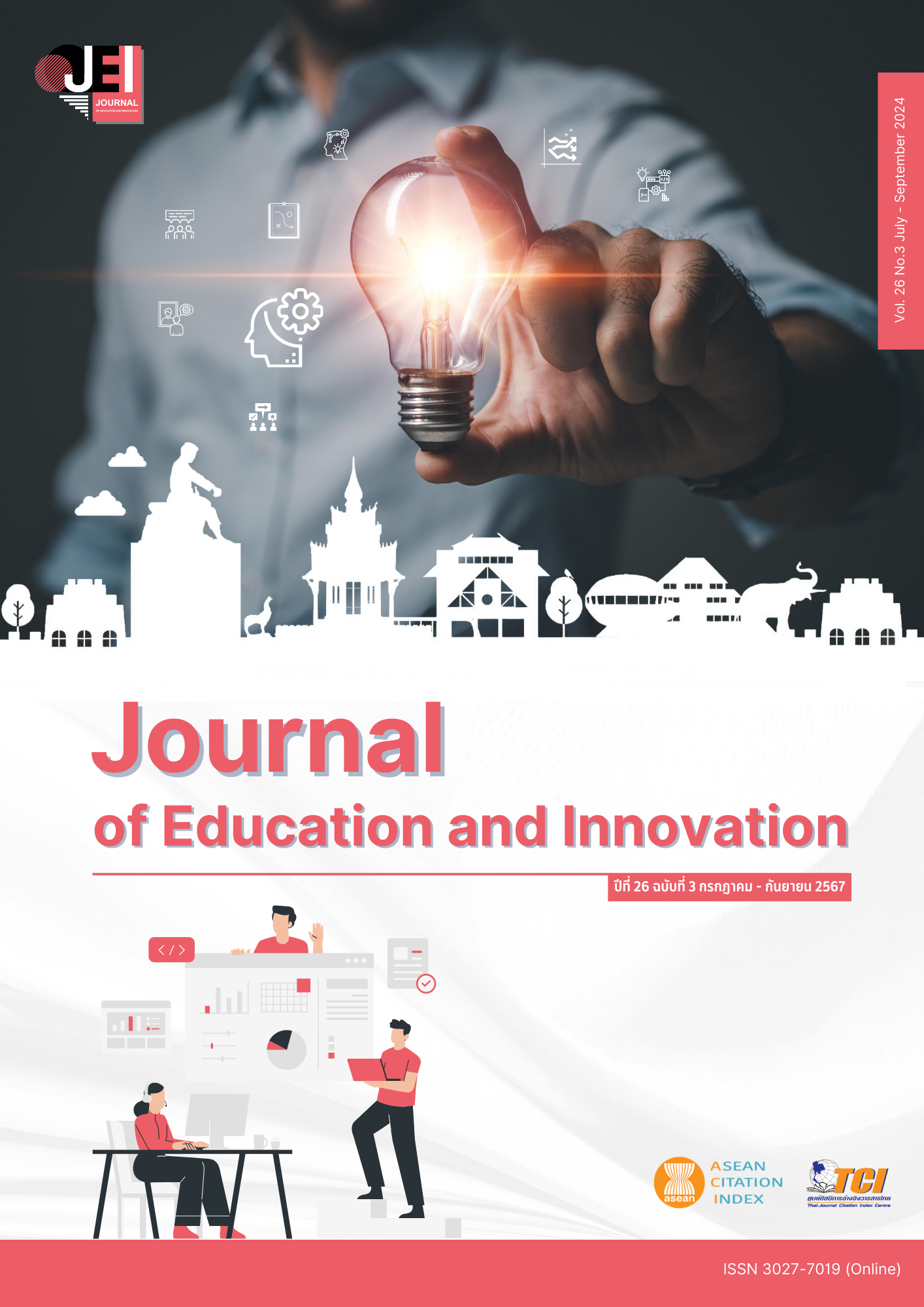ENHANCING SELF-MANAGEMENT TO SOCIAL COHESION IN THE AGING SOCIETY FOR GRADE 4-6 STUDENTS WITH ADDITIONAL INTERDISCIPLINARY CURRICULUM INTEGRATION OF LOCAL CULTURE FOR LIVING TOGETHER IN AN AGING SOCIETY WITH QUALITY
Main Article Content
Abstract
The purpose of this research was to 1) study the necessary needs, 2) create the curriculum, 3) try the curriculum by Study at the level of self-management, and 4) assess the curriculum. The research and development carried out in 4 phases: 1) studying the necessary needs by synthesizing information from documents and interviewing 43 people involved; 2) creating additional courses, criticized by 10 experts and assessed the quality of the curriculum by 30 teachers; 3) trial on the curriculum by comparing the level of self-management before and after using the curriculum with 100 grade 4-6 students; 4) assessing the curriculum with 106 teachers and students in grades 4-6. The research findings were as follows: 1) self-management, it was necessary because students were at an age where they have to perform their own roles and responsibilities and developed with additional courses that were interdisciplinary in combination with local cultures, 2) additional courses consist of names, leadership, vision, principles, aims, competencies, features, structure, course descriptions. learning outcomes scope of content, class time, activity management guidelines media/learning resources and the measurement and evaluation approach, with contents of 4 units: (1) my family and my role; (2) caring for family members; (3) helping with job roles, 4) behavior appropriately. The manage learning by focusing on students and real practice and measure and evaluate according to actual conditions, 3) self-management for strengthening social cohesion in the aged society of students after using the curriculum was higher than before using the curriculum at the statistical significance level of 0.01, and 4) context curriculum assessment results input side process and productivity at a high level.
Article Details

This work is licensed under a Creative Commons Attribution-NonCommercial-NoDerivatives 4.0 International License.
The owner of the article does not copy or violate any of its copyright. If any copyright infringement occurs or prosecution, in any case, the Editorial Board is not involved in all the rights to the owner of the article to be performed.
References
Barkley, R. A. (2012). Executive functions: What they are, how they work, and why they evolved. The Guilford Press.
Department of Women's Affairs and Family Development Ministry of Social Development and Human Security. (2017). Family Development Policy and Strategy 2004-2013. Retrieved August 26, 2020, from http://www.oic.go.th/FILEWEB/CABINFOCENTER3/DRAWER076/GENERAL/DATA0000/00000095.PDF
Faulconer, A. W. (2004). Civic Excellence: Citizen Virtue and Contemporary Liberal Democratic Community (Doctoral dissertation). Notre Dame, IN: University of Notre Dame.
Frazee, B. M., & Rudnitski, R. A. (1998). Integrated teaching methods: theory, classroom applications, and field-based connections (education). Retrieved August 26, 2020, from https://www.amazon.com/Integrated-Teaching-Methods-Applications-Field-Based/dp/0827359594
Kullachart, J. (2014). The development of selective courses curriculum, on the topic of invention from recycled materials to promote the creative thinking of students in Pratomsuksa 6 (Master thesis). Maha Sarakham: Mahasarakham University.
Ministry of Education. (2017). Basic Education Core Curriculum, 2001. Bangkok: Institute of Academic Development (IAD).
National Board of Elders Ministry of Social Development and Human Security. (2009). National plan for the elderly, vol. 2 (2002 - 2021), Revised edition, No. 1. Bangkok: The Agricultural Cooperative Association of Thailand Printing House.
Noythanorm, W. (2014). Development intrgrated curriculum of science and Thai language on topic “Living Plant” for grade 4 students of Ban Khaothong School, Chantaburi Province (Master thesis). Chonburi: Burapha University.
Office of the Higher Education Commission. (2012). Interdisciplinary courses. (Interdisciplinary Curriculum), Multidisciplinary Curriculum, and Integrated Curriculum. Retrieved March 9, 2021, from www.Ubu.ac.th/ web/Files_up/46f2014100214483734.docx
Rittirong, J., Jarassit, S., & Nitnara, P. (2020). Open the C-Alpha Children's Home. Parenting, development, behavior, family atmosphere. Retrieved July 19, 2020, from https://www.The101.world/thai-families-diversity-statistic/
Stufflebeam, D. L., & et al. (1971). Educational Evaluation and Decision Making. Illionis: F.E. Peacock Publishers.
The United Nations Population Fund Thailand and Office of the National Economics and Social Development Council. (2015). The 2015 Situation of Thai Population Report: Faces of Thai Families in the Era of Low Fertility and Longevity. Retrieved August 26, 2020, from https://www.the101.world/thai-families-diversity-statistic/


